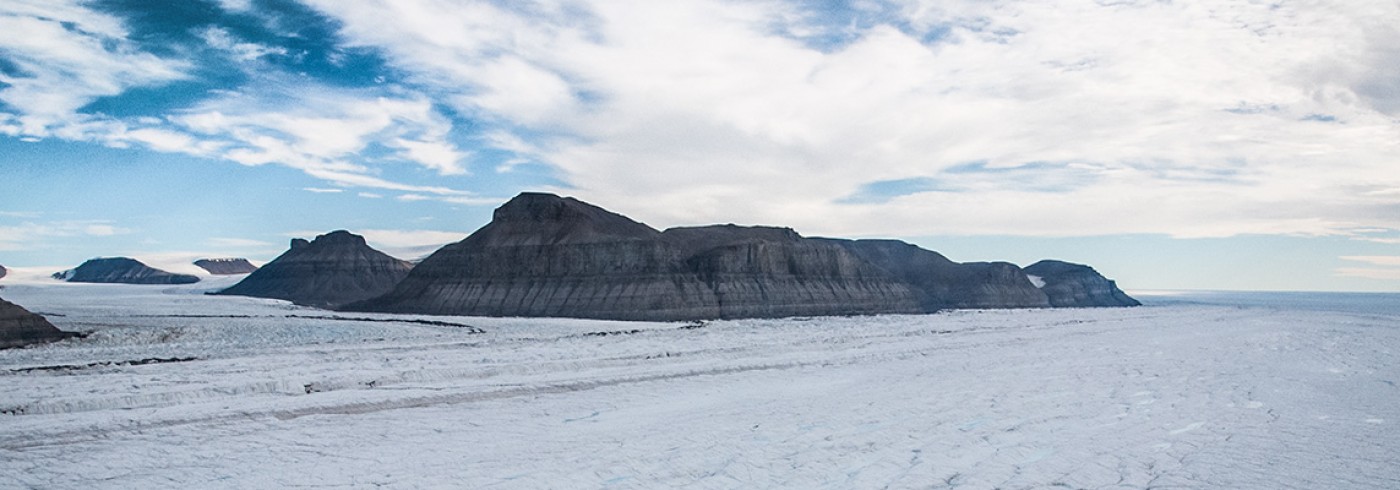The Ryder 2019 expedition with the Swedish icebreaker Oden is a multidisciplinary expedition, spanning the fields of atmospheric chemistry and physics, biology, climatology, ecology, genomics, glaciology, oceanography, marine geology, geophysics and geochemistry. The overarching goal is to investigate the dynamics and development of the marine cryosphere and ocean conditions over time in the marine realm of Ryder Glacier; more specifically in the Sherard Osborne Fjord and adjacent area of northern Nares Strait and the southern Lincoln Sea. Earth’s marine cryosphere includes glaciers extending into the ocean, ice sheets with their base suppressed below sea level, sea ice, gas hydrates and subsea permafrost.
Scientific motivation
One of the primary scientific motivations of the expedition is related to the role of outlet glaciers, such as Ryder Glacier, draining the Greenland Ice Sheet into the ocean. The dynamics of Greenland’s outlet glaciers represent an essential, but poorly constrained, part of our understanding of future sea-level rise in a warming climate. Critical to their stability are the roles of sea ice, floating ice tongues, bedrock and the shape of the seafloor.
The goal is to collect contextual data including information about the physical shape of the seafloor and its uppermost structure and geological composition, ocean conditions, as well as information about meltwater influx from the glaciers in the survey area. These data are needed from this poorly explored region to better constrain the numerical models needed to predict and assess the potential contribution of northern Greenland’s Ice Sheet to future sea-level rise.
Scientific questions
Some of the more specific key scientific questions include:
- What are the causes for observed patterns and sudden dynamic changes of the marine cryosphere of northern Greenland?
- What is the potential contribution to global sea-level rise from the northern sector of the Greenland Ice Sheet in a warming climate?
- What are the dynamic roles of floating ice tongues and sea ice for the stability of northern Greenland outlet glaciers?
- How does geology (bedrock and/or the shape of the seafloor) control the retreat dynamics of the northern Greenland Ice Sheet?
- What is the role in accelerating glacial melting of inflowing warmer water of Atlantic origin towards the outlet glaciers?
- What are the effects of glacial meltwater for the nutrient budget and productivity of the coastal marine ecosystem?
- What are the effects of glacial meltwater on the CO2 system and ocean acidification?
Petermann 2015
The Ryder 2019 project is a continuation of the expedtion to the Petermann Glacier in 2015. During the Petermann 2015 expedition, the Petermann Fjord and adjacent area of Hall Basin were investigated. The setup for the Ryder 2019 expedition is nearly identical.
Co-chief scientists
Martin Jakobsson
Department of Geological Sciences, Stockholm University
Larry Mayer
Center for Coastal and Ocean Mapping/Joint Hydrographic Center, University of New Hampshire, USA

